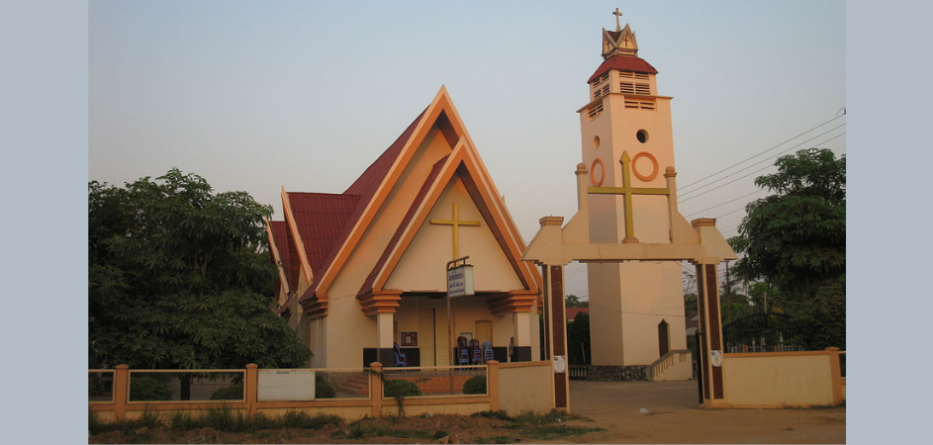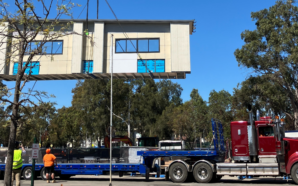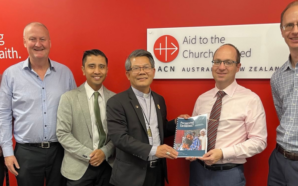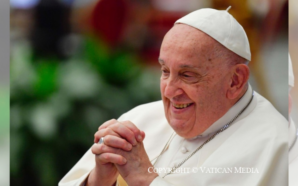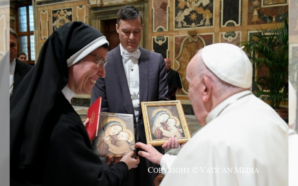Faced with limited communication and government restrictions, Laos’ Catholic community is resilient, driven by local clergy and dedicated laypeople. The head of the Catholic Bishops Conference of Laos and Cambodia calls this steadfast faith a “small miracle.”
In a country where communication with the outside world remains fraught with challenges, the Catholic community in Laos continues to thrive in faith and resilience, according to Jesuit Father Enrique Figaredo Alvargonzález, Apostolic Prefect of Battambang in Cambodia, and President of the Catholic Bishops Conference of Laos and Cambodia (CELAC).
“Communication here [in Laos] is sporadic and difficult,” the Spanish Jesuit told Fides, noting obstacles due to language barriers, government restrictions, and the limited capacity to connect with local bishops and Catholic representatives. Despite the challenges, he observed that the Catholic community in Laos “gives glory to God” and pursues its mission “with joy,” said Father Figaredo.
The CELAC assembly brings bishops together twice a year, alternating between Laos and Cambodia, to address the needs of their respective communities. Regular communication, however, remains limited, Figaredo said, given the country’s restrictions on foreign missionaries and support from neighboring churches. Yet, he added, “the Laotian community is not discouraged at all” and lives each day fully dedicated to their faith.
“The church goes forward only by the grace of God”
Laos’ Catholic Church has become highly self-sufficient, with local clergy, nuns, and catechists leading pastoral work. Bishop Andrew Souksavath Nouane, Apostolic Vicar of Paksé and the youngest Laotian bishop, serves as a vital communication link for CELAC due to his English proficiency. “The church goes forward only by the grace of God,” Father Figaredo said, adding that baptisms and vocations are steadily growing, a testament he described as a “small miracle.”
Father Figaredo recounted attending celebrations in Laos, including the 2016 recognition of Laotian martyrs, which saw “an incredible number of people” and was marked by a vibrant faith. He noted that the community, while culturally distinct, remains deeply loyal to the pope, who is “regarded with great affection.”
To support this growing community, Father Figaredo highlighted the need for better facilities, along with spiritual and biblical training for local nuns, catechists, and seminarians. Though priests from neighboring countries could assist, permission to bring in foreign clergy is not always granted. Nonetheless, he sees hope in initiatives like Caritas Laos, which connects Laotian volunteers with Caritas Internationalis and allows them to participate in international meetings, such as those in Bangkok.
“There is great hope for the Church in Laos”
Summing up the challenges and the community’s resilience, Father Figaredo remarked, “There is great hope for the Church in Laos.” With 51,000 Catholics, more than in Cambodia, and a surge in vocations, he said, “there is life” in this small yet vibrant church community.
Laos has only four bishops and 20 priests. Still, the low number doesn’t bother Louis Marie Ling Mangkhanekhoun, 80, the Apostolic Vicar of Vientiane, who Pope Francis in 2017 made a cardinal, marking a significant milestone for the small Catholic Church in Laos. “For me, it’s not the number of priests that count, but the quality. We have to do our best to make them qualified as a priest. And even with nothing, we can still do something,” he reportedly said.
The Lao People’s Democratic Republic is a socialist state with a predominantly Buddhist culture and a population of 7.5 million people. The Catholic Church in Laos, a former French colony, was initially part of the Apostolic Vicariate of Eastern Siam. Currently, there are four Apostolic Vicariates in Laos: Vientiane, Paksè, Luang Prabang, and Savannakhet, collectively serving about 60,000 Catholics.
Since the official recognition of the Catholic Church by the Lao Front for National Development in 1979, relations between the church and the government have gradually improved, especially within the framework of religious freedom recognized in the 1991 Constitution. This constitution officially acknowledges four religions: Buddhism, Christianity, Islam, and the Baha’i faith, though with certain legal limitations. However, the law has received little publicity and is rarely enforced in the interior of the country, where Christians continue to face discrimination from some provincial officials and local Buddhist villagers who view Christianity as a foreign faith.
Reproduced with permission from La Croix International.




